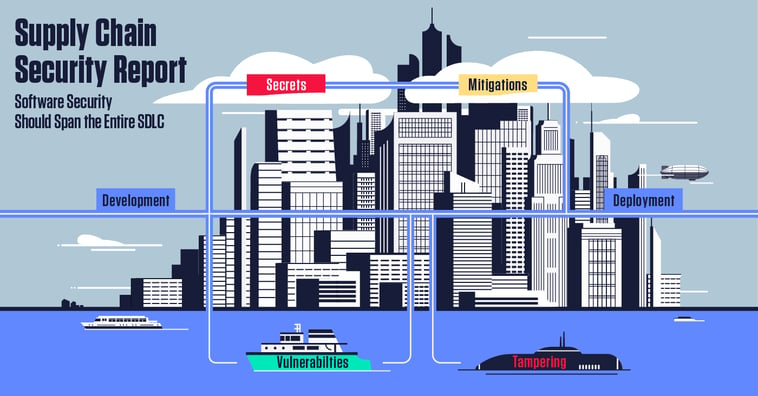Special Report
Blog Report

5 AI threats keeping SOC teams up at night
Learn moreSolution

Security operations center (SOC) — A centralized facility or team responsible for real-time monitoring, detecting, analyzing, and responding to cybersecurity threats and incidents. The primary goal of a SOC is to ensure the security, integrity, and availability of an organization's information systems, data, and digital assets. Security operations (SecOps) teams are composed of skilled cybersecurity professionals who work together to defend against various cyberthreats, including malware attacks, data breaches, intrusions, software supply chain attacks, and more.
SOCs play a pivotal role in ensuring the resilience of organizations against cyberthreats. Combining technologies, skilled personnel, and intricate processes, SOCs are equipped to identify and mitigate potential risks, reduce the impact of breaches, and safeguard critical assets. Their vigilance enables organizations to respond swiftly to emerging threats, preserving business continuity and customer trust. By embracing advanced technologies, fostering expert teams, and adhering to stringent processes, SOCs empower organizations to navigate the intricate landscape of cybersecurity with resilience and confidence.
Threat monitoring and detection: SOCs continuously monitor network traffic, systems, applications, and endpoints for any suspicious activities or anomalies that could indicate potential security breaches.
Incident response: When a security incident occurs, SOCs mobilize to contain, investigate, and remediate the issue. Their expertise ensures that incidents are mitigated promptly and effectively.
Vulnerability management: SOCs identify and assess vulnerabilities in systems and applications, enabling organizations to proactively patch or mitigate potential weaknesses.
Security information and event management (SIEM): SOCs leverage SIEM tools to aggregate, correlate, and analyze security-related data from various sources, enabling them to detect and respond to threats more efficiently.
Threat intelligence analysis: SOC teams stay informed about the evolving threat landscape by analyzing threat intelligence feeds and sharing relevant insights with the organization.
Forensics and analysis: After an incident, SOCs conduct thorough forensic analysis to understand the attack's nature, scope, and impact, aiding in prevention and future readiness.
Preparation: The first phase in the SOC lifecycle involves meticulous preparation. SOC teams establish robust workflows, processes, and procedures that lay the groundwork for effective incident response. This phase ensures that every team member understands their roles and responsibilities, providing a cohesive and well-coordinated response when incidents occur. Adequate preparation involves the selection and implementation of advanced security tools, the establishment of communication protocols, and the creation of incident-response playbooks.
Identification: SOC teams remain ever watchful for signs of potential threats and vulnerabilities during the identification phase. Leveraging a combination of cutting-edge technologies, including intrusion detection systems and anomaly detection tools, they monitor network traffic, system logs, and security events for any unusual or suspicious activities. This vigilance enables the early detection of security breaches, allowing SOC analysts to respond swiftly and proactively.
Containment: SOC teams shift into action mode upon detecting a potential threat, swiftly moving to the containment phase. The goal is to prevent the incident from spreading further within the network. Immediate measures are taken to isolate affected systems, endpoints, or applications, minimizing the attacker's ability to move laterally and escalate the attack's impact. This phase is crucial in limiting the damage and stopping the incident from becoming a full-blown breach.
Eradication: In the eradication phase, SOC teams work diligently to eliminate the attacker's presence and remove the incident's root cause. This involves thoroughly examining affected systems to ensure that no residual malware or backdoors remain. By eradicating the threat at its source, SOC professionals lay the groundwork for preventing future attacks of a similar nature.
Recovery: After containing and eradicating the threat, the focus shifts to the recovery phase. SOC teams collaborate to restore affected systems, applications, and data to normal operation. This may involve deploying clean backups, applying patches, and conducting thorough testing to ensure that the restored components are free from vulnerabilities. The recovery phase aims to minimize operational disruptions and restore business continuity.
Post-incident review: The final phase of the SOC operational cycle involves a critical self-assessment through lessons learned. SOC teams conduct post-incident analysis to identify areas for improvement in processes, technology, and training. Insights gained from each incident drive refinements to incident-response strategies, helping the SOC enhance its readiness for future challenges. This phase ensures that the SOC continually evolves to meet the dynamic and evolving threat landscape.
For further insights into SOCs, explore the following articles:


